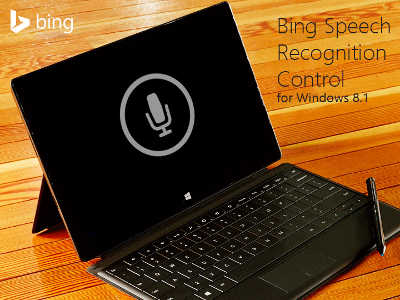| Bing As Platform Arrives |
| Written by Lucy Black | |||
| Tuesday, 22 October 2013 | |||
|
Following up on the promise to make Bing into a platform that developers can use to improve their apps, Microsoft has released new controls for speech recognition, OCR and translation. The whole "Bing as platform" idea is a little strange. Bing used to be a search engine, now it seems to be developing into something like Google Play Services. Earlier in the month the Bing Maps SDK was updated to make it easier for Windows Store Apps or WinRT apps to make use of maps. Now we have a set of new XAML controls which add speech recognition, OCR and translation. The first question is what is a XAML control? It appears that this is Microsoft's way of saying it's a WinRT control. You can't use any of these new controls in a classic .NET desktop application - well you probably can, but it isn't straightforward and it isn't going to be supported. The announcement makes it very clear that the new features target Windows 8/ 8.1 or WP8 only, but you have to look more carefully to discover that this rules out desktop app use.
The speech recognition control also needs you to be signed up to the Windows Azure Data Marketplace and you get 500,000 service calls per month free - after that you have to talk to Microsoft about the tariff. The control converts speech to text and is a different service to the one that provides voice commands under WP8. The speech recognition control can be used with C++, C# or JavaScript WinRT apps.
The OCR control is used in much the same way and will convert video input into text. The default UI shows the user a video image and when the user taps on the area the control captures the image and returns the identified text and its location within the image. The hardware has to have a camera that supports 1280x720 or 640x480. In this case the registration at the Azure Data Marketplace gives you 5000 free calls per month. It seems that you can use it with C++ or C#. but not with JavaScript at the moment.
The Translator control works with C++, C# and JavaScript and you get a free 2 million characters per month. You can translate between more than 40 languages.
Microsoft's publicity stresses the way that these new controls can be used together to build an app that does it all - listens to what you say, translates it into another language and then reads the terms and conditions of using the app. This is all true, but what if you don't want to just create a WinRT or Windows Store App?
Windows has had a managed code speech recognition API since Windows XP (it is currently at version 5.4). For OCR there is no Microsoft API for general apps or web sites, only third party products. The Microsoft Translator API is also available from the Azure Data Marketplace and this can be used to build ASP.NET and managed applications. You can also use Web widget, AJAX, HTTP, SOAP, or OData and it has the same 2 million character limits. The new controls fit in well with Microsoft becoming a services and devices company. It really only has competition from Google in the translation service and Google doesn't offer a free quota. Google does have an OCR API, but it is part of Google Docs and not so generally applicable and the only speech recognition API that is supported is part of the Chrome browser. So it seems Microsoft is currently better at getting its advanced technology out to the programmer. The big problem is that Microsoft is being selective about what technologies its services support - i.e. WinRT. A true "services" company would be attempting to get its services as widely used as possible and not using them as a lever to make its OS look more attractive.
More InformationNew Bing Speech Recognition Control and Updated Bing OCR and Translator Controls Related ArticlesDeep Learning Powers BING Voice Input SDK for Bing Spatial Data Services Bing Maps for Metro Style Apps
To be informed about new articles on I Programmer, install the I Programmer Toolbar, subscribe to the RSS feed, follow us on, Twitter, Facebook, Google+ or Linkedin, or sign up for our weekly newsletter.
Comments
or email your comment to: comments@i-programmer.info
|
|||
| Last Updated ( Tuesday, 22 October 2013 ) |



